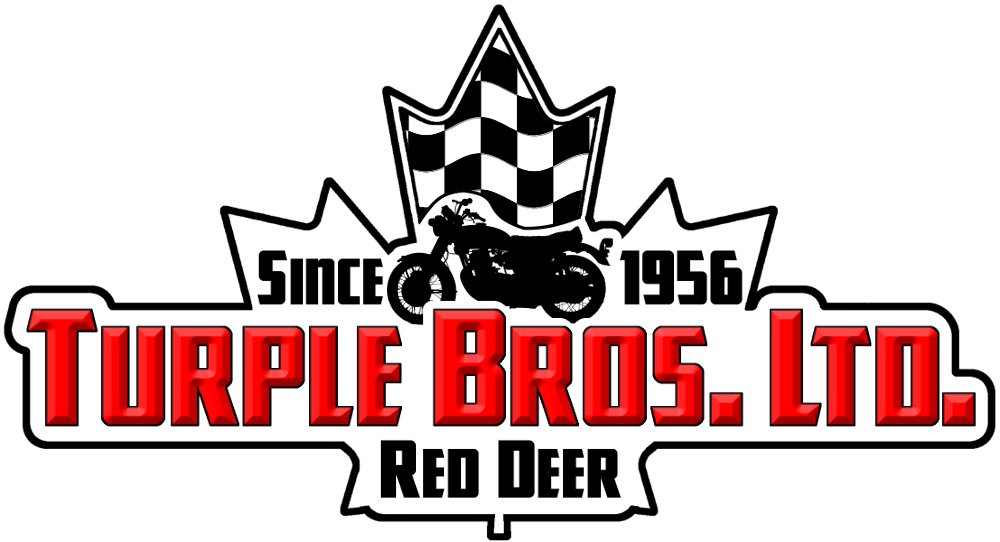Derringer racer ready to take the competition
Locally designed Harley packs more than 400 horsepower
Darcy Gray, Freelance
Published: Friday, May 26, 2006
EDMONTON - This year's Harley-Davidson drag races might definitively show that the bike with the most intelligent geometry will also post the best race times.
Two local residents have teamed up with an American bike-racing champion to design a completely new engine "program" known as the "Derringer" engine. It features a one-piece crankshaft that they trust will give them a competitive edge during the 2006 drag-bike racing season. Using their imagination, their experience and the Internet, the three shared and compared designs until they all agreed upon a blueprint that is so hot it might spontaneously combust.
If it were possible to patent the geometry used to build the "Derringer Engine," which comes with a one-piece, side-by-side automotive-style rods and massive Top Fuel-style main bearings crankshaft, the math would be priceless.
"When we first started in 1993, nobody had a one-piece crank in the Nitro Pro Dragster class. We still are the only Canadian ones," said Jerry Gordon, Edmonton resident and crew chief.
Gordon, along with rider Al Miles, says that creating their custom-made crankshaft reminded them of the memorable quote by Wilfred Grenfell: "If we face our tasks with the resolution to solve them, who shall say that anything is impossible?"
Both men say the efforts they put into developing horsepower and tune-up specifications in their racing bike paid off during the 1997 All Harley Drag Racing Association (AHDRA) season. Based in Pfafftown, North Carolina, it is the biggest Harley drag-racing association in the world.
In 1997, they finished as runner-up in four races and in two semifinal races until they lost the final race by only six-ten thousandths of a second. However, they did win the No. 2 plate in association at the end of the '97 season. They accomplished this using a conventional Harley-Davidson-style five-piece crank and much modified cast Harley-Davidson engine cases.
They say they believe they lost the 1997 championship races because they could not completely perform the necessary engine repairs in the time allotted between rounds at the season final race.
The engine configuration was the problem. It was inherently weak, especially in the crankshaft/rod assembly department.
The crank bearings were constantly failing. The Canadian duo had fine-tuned their machine to the point of perfection, only to split the crankshaft roller bearings in half or "grind them into powder" under phenomenal detonation pressures.
Perhaps like others on their own racing circuits, the trio's success masqueraded as their failure, but in their case the repeated breakdowns had really spoiled the mood.
"It got to the point where we were spending more time fixing motors instead of racing them," Gordon said. "It was no fun anymore. We actually had to detune the motor just to stay in the race. We could rebuild any part of a motor in an hour, but it took up to 30 hours to build a crankshaft and engine cases."
"By the year 2000, out of frustration we introduced the Edmonton manufactured Silver Bullet engine program," Miles said. "This featured billet engine cases and a much improved crankshaft system."
By 2002 this motor program was blossoming. Although they labored through many motors, they did find some success and they were rewarded with two consecutive Pro Dragster Championships in the CMDRA (Canadian Motorcycle Drag Racing Association). They used this motor program in 2003 to win five out of six races, but were still breaking engine parts.
They sold their 2003 championship bike to put the cash into research and development for a new bike and a more durable engine design.
Johnny Vickers, a U.S.-record champion in the same fuel class, joined the pair, contributing extensive time and effort to their private war effort.
They needed only one year to crunch the numbers and design a solid engine program complete with new engine case, cylinders, and with a one piece crankshaft that is compatible with automotive-style rods and shell-style bearings.
This new system, which incorporates special bearings that are used by NASCAR as well as Honda, takes over from the original five-piece Harley Davidson roller bearing design that had regularly failed the team.
"Every piece is custom made. The crankshaft was built by a custom auto crankshaft builder called Moldex, in Michigan," said Miles.




